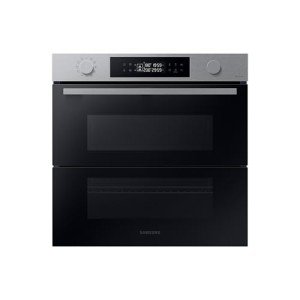Your Worst Nightmare Concerning Oven Built In Get Real
The Rise of Built-In Ovens: A Seamless Approach to Modern Cooking In modern kitchen areas, where design aesthetic appeals mix flawlessly with functionality, one device sticks out as a real video game changer: the built-in oven. As property owners and chefs alike continue to seek innovative solutions that improve their cooking experience, built-in ovens have actually ended up being increasingly popular. This short article explores the advantages, factors to consider, and patterns surrounding built-in ovens, highlighting why they are an important function in modern-day cooking areas. What is a Built-In Oven? A built-in oven is a cooking area home appliance created to be integrated into the kitchen cabinetry of a cooking area instead of standing alone. Unlike traditional freestanding ovens, which can be moved and positioned anywhere, built-in ovens come in different designs and sizes to fit particularly within designated spaces. Readily available in single or double configurations, these ovens use a streamlined appearance that matches modern-day cooking area designs. Advantages of Built-In Ovens 1. Space-Saving Design Among the most attractive benefits of built-in ovens is their space-saving style. By integrating the oven into cabinets, you can maximize valuable counter and flooring area. This is particularly advantageous in smaller cooking areas, where optimizing room is important. Built-in ovens can be installed at eye level, making them more available and minimizing the requirement to flex down. 2. Visual Appeal Built-in ovens contribute to a streamlined and cohesive kitchen design. Available in numerous finishes— such as stainless steel, black, white, and customized kitchen cabinetry— they can blend seamlessly into the general decoration. This aesthetic appeal improves the kitchen's visual harmony and elevates the space, developing a contemporary and advanced environment. 3. Improved Functionality Numerous built-in ovens come geared up with sophisticated cooking technologies, such as convection cooking, steam ovens, and smart functions. These improvements enable for flexible cooking choices, making it simpler to achieve professional-level results at home. Smart built-in ovens can even link to Wi-Fi, allowing users to manage the oven from another location, receive alerts, and gain access to a range of cooking programs and recipes. 4. Enhanced Ventilation Since built-in ovens can be integrated with kitchen area hoods and ventilation systems, they can assist preserve much better air quality and minimize cooking smells. This is especially significant for those who enjoy to prepare with fragrant spices and ingredients, as an effective ventilation system can keep the cooking area comfortable and welcoming. 5. Modification Options Built-in ovens use a large range of personalization alternatives to match private cooking designs and requirements. From professional-grade home appliances with numerous cooking modes to compact styles for smaller kitchens, house owners can choose the oven that fits their specific requirements. Many makers likewise use adjustable front panels, enabling you to match the oven's appearance to your kitchen cabinetry for a genuinely combined appearance. Factors to consider When Choosing a Built-In Oven While built-in ovens have lots of advantages, there are crucial considerations to keep in mind before buying: 1. Cost Built-in ovens usually feature a higher rate tag than their freestanding counterparts due to their style and setup requirements. It's crucial to consider both the expense of the oven and any additional expenses associated with kitchen cabinetry adjustments or installation. 2. Setup Requirements Setting up a built-in oven frequently requires expert support, particularly if you require to customize existing kitchen cabinetry. Guarantee that you think about any costs related to installation, including labor and potential cabinets changes. 3. Size and Dimensions Before purchasing a built-in oven, determine the designated area accurately to make sure a correct fit. Built-in ovens come in different sizes and configurations, so choosing one that aligns with your needs and kitchen style is vital. 4. oven integrated of life and Usage Consider your cooking routines and requires when picking a built-in oven. If you frequently host big gatherings, a double oven might be more helpful. On the other hand, if you have a compact kitchen, a single-wall oven might be adequate. Patterns in Built-In Ovens The kitchen appliance market is continuously evolving, and built-in ovens are not exempt from emerging patterns. Some present trends consist of: Smart Technology Integration: With the increase of smart home technology, built-in ovens now frequently feature connectivity alternatives. This enables users to keep track of cooking development and change settings through mobile apps. Energy Efficiency: As sustainability becomes a top priority, lots of manufacturers are buying energy-efficient built-in ovens that lower energy intake while keeping efficiency.  Multi-functional Designs: Built-in ovens now use functions such as air frying, slow cooking, and steaming, offering versatility that meets a vast array of cooking approaches. Conclusion Built-in ovens undoubtedly represent an ideal blend of style, function, and convenience in today's kitchens. As more homeowners choose this contemporary solution, the focus shifts to creating a cooking space that is as aesthetically pleasing as it is useful. Whether you are developing a brand-new home or renovating your cooking area, thinking about a built-in oven might raise your culinary experience and transform your kitchen area into a stylish and practical haven. With a selection of options available and ongoing developments in technology, built-in ovens stay a standout option for both newbie cooks and cooking lovers alike.
Multi-functional Designs: Built-in ovens now use functions such as air frying, slow cooking, and steaming, offering versatility that meets a vast array of cooking approaches. Conclusion Built-in ovens undoubtedly represent an ideal blend of style, function, and convenience in today's kitchens. As more homeowners choose this contemporary solution, the focus shifts to creating a cooking space that is as aesthetically pleasing as it is useful. Whether you are developing a brand-new home or renovating your cooking area, thinking about a built-in oven might raise your culinary experience and transform your kitchen area into a stylish and practical haven. With a selection of options available and ongoing developments in technology, built-in ovens stay a standout option for both newbie cooks and cooking lovers alike.